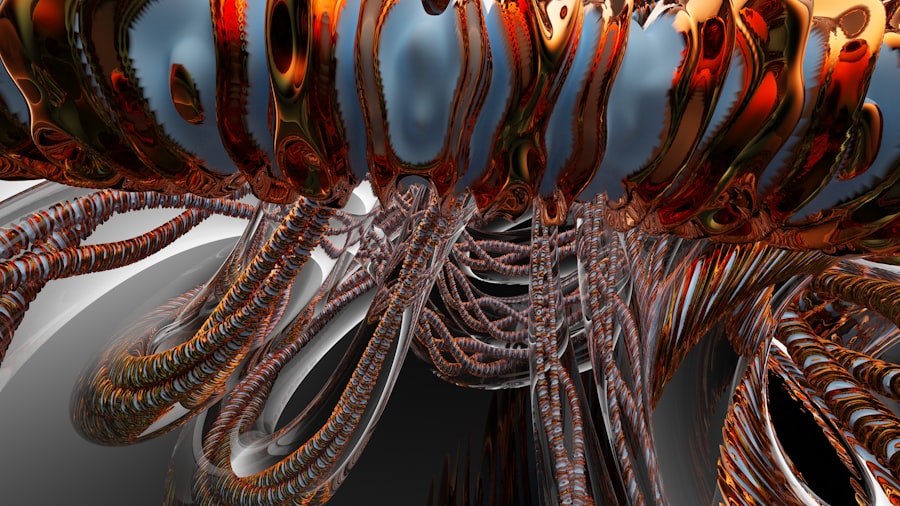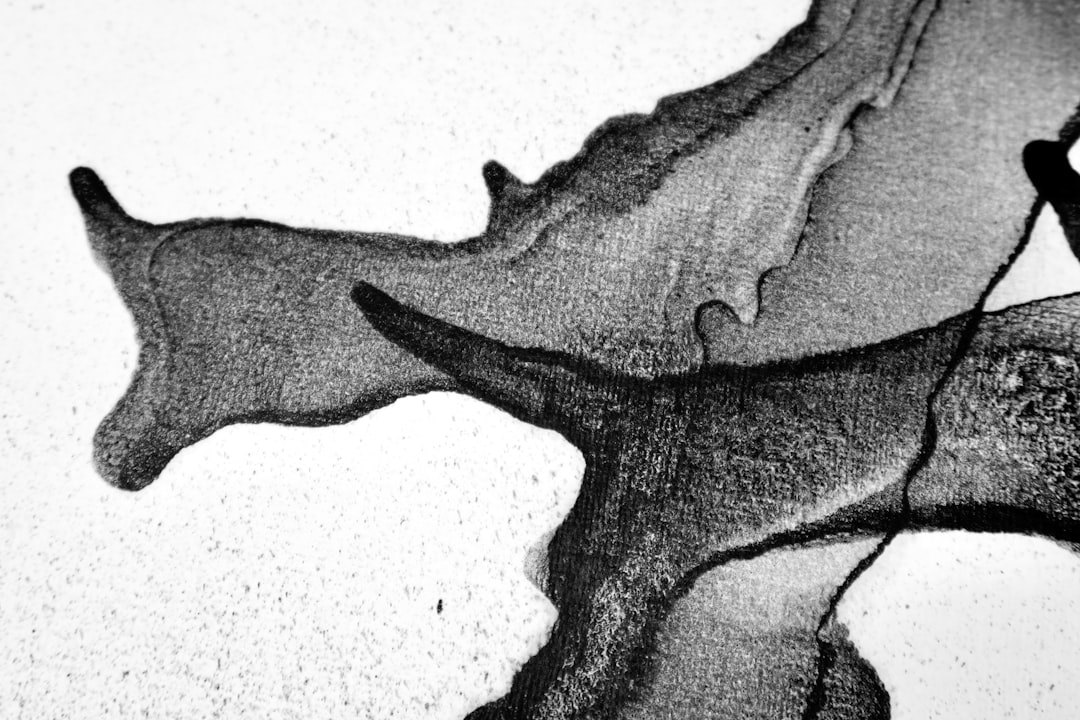The dorsal root ganglion (DRG) is a crucial structure in the peripheral nervous system, serving as a relay station for sensory information traveling from the body to the central nervous system. Nestled just outside the spinal cord, these clusters of nerve cell bodies are responsible for processing sensory signals, including touch, temperature, and pain. Each spinal nerve has its own DRG, which contains the cell bodies of sensory neurons that transmit information from various parts of the body.
This anatomical arrangement allows for efficient communication between the peripheral and central nervous systems, ensuring that sensory information is accurately relayed and processed. Understanding the structure and function of the dorsal root ganglion is essential for grasping how pain signals are transmitted throughout the body. The DRG acts as a critical hub where sensory information is collected and integrated before being sent to the spinal cord and ultimately to the brain.
This makes it a focal point in the study of pain mechanisms, as any dysfunction or alteration in the DRG can lead to abnormal pain sensations or heightened sensitivity to pain.
Key Takeaways
- The dorsal root ganglion is a cluster of nerve cells located along the spinal cord.
- It plays a crucial role in transmitting pain signals from the body to the brain.
- Dorsal root ganglion processes various types of pain signals, including nociceptive, neuropathic, and inflammatory pain.
- Understanding the pathways of dorsal root ganglion pain signals is essential for effective pain management.
- Common conditions associated with dorsal root ganglion pain include radiculopathy, neuropathy, and complex regional pain syndrome.
The Role of Dorsal Root Ganglion in Pain Signaling
The dorsal root ganglion plays a pivotal role in pain signaling by acting as a gateway for nociceptive (pain-related) information. When you experience an injury or inflammation, specialized sensory neurons in your body detect harmful stimuli and send signals to the DRG. Here, these signals are processed and transmitted to the spinal cord, where they can be further modulated before reaching the brain.
This process is essential for your body’s ability to respond to potential threats and initiate protective reflexes. Moreover, the DRG is not merely a passive relay station; it actively participates in modulating pain signals. Various factors, such as inflammation or nerve injury, can alter the excitability of neurons within the DRG, leading to changes in how pain is perceived.
For instance, if you have an injury that causes inflammation, the DRG may become hyperactive, amplifying pain signals and resulting in heightened sensitivity. This phenomenon, known as peripheral sensitization, underscores the importance of the DRG in both normal pain signaling and pathological conditions.
Types of Pain Signals Processed by Dorsal Root Ganglion

The dorsal root ganglion processes several types of pain signals, each corresponding to different types of sensory stimuli. Nociceptive pain, which arises from actual or potential tissue damage, is one of the primary types of pain signals that the DRG handles. This type of pain is typically sharp and localized, often prompting immediate reactions such as withdrawal from harmful stimuli.
In addition to nociceptive pain, the DRG also processes neuropathic pain signals, which arise from damage or dysfunction within the nervous system itself. Neuropathic pain can manifest as burning sensations, tingling, or shooting pains and often occurs without any obvious external injury.
The DRG’s role in processing these diverse types of pain signals highlights its complexity and importance in understanding various pain conditions. By recognizing how different types of pain are processed, you can better appreciate the challenges faced by individuals suffering from chronic pain syndromes.
Understanding the Pathways of Dorsal Root Ganglion Pain Signals
| Pathway | Description |
|---|---|
| Transduction | Conversion of noxious stimuli into electrical signals by nociceptors |
| Transmission | Propagation of pain signals along the dorsal root ganglion to the spinal cord |
| Modulation | Regulation of pain signals by neurotransmitters and receptors |
| Perception | Integration of pain signals in the brain leading to conscious awareness of pain |
To fully comprehend how pain signals are transmitted through the dorsal root ganglion, it is essential to explore the pathways involved in this process. When a painful stimulus is detected by peripheral sensory neurons, an action potential is generated and travels along the axon toward the DRG. Once at the DRG, this signal is relayed to second-order neurons that reside in the spinal cord.
These neurons then transmit the signal up to higher brain centers for further processing. The pathways that emerge from the DRG are complex and involve multiple synapses and neurotransmitters. For instance, substance P and glutamate are two key neurotransmitters involved in transmitting pain signals from the DRG to the spinal cord.
Understanding these pathways is crucial for developing targeted interventions aimed at modulating pain signaling. By identifying specific points along these pathways where interventions can be applied, you can gain insights into potential therapeutic strategies for managing pain more effectively.
Common Conditions Associated with Dorsal Root Ganglion Pain
Several common conditions are associated with dorsal root ganglion pain, each presenting unique challenges for those affected. One prevalent condition is radiculopathy, which occurs when a nerve root becomes compressed or irritated as it exits the spinal column. This can lead to symptoms such as sharp pain radiating down an arm or leg, often accompanied by numbness or weakness.
The involvement of the DRG in this process highlights its significance in understanding radiculopathy’s underlying mechanisms. Another condition linked to dorsal root ganglion dysfunction is complex regional pain syndrome (CRPS), a chronic pain condition characterized by severe and often debilitating pain following an injury. In CRPS, abnormal signaling within the DRG may contribute to heightened pain perception and other symptoms such as swelling and changes in skin color or temperature.
Recognizing these conditions’ association with dorsal root ganglion pain can help you better understand their complexities and inform treatment approaches.
Diagnostic Techniques for Dorsal Root Ganglion Pain

Diagnosing dorsal root ganglion pain requires a comprehensive approach that combines clinical evaluation with advanced diagnostic techniques. A thorough medical history and physical examination are essential first steps in identifying potential sources of pain related to the DRG. Your healthcare provider may ask about your symptoms’ onset, duration, and characteristics while also assessing your neurological function.
In addition to clinical evaluation, imaging studies such as MRI or CT scans can provide valuable insights into structural abnormalities affecting the spinal nerves and their associated dorsal root ganglia. Electromyography (EMG) and nerve conduction studies may also be employed to assess nerve function and identify any abnormalities in signal transmission. By utilizing these diagnostic techniques, you can gain a clearer understanding of your condition and work with your healthcare provider to develop an appropriate treatment plan.
Treatment Options for Dorsal Root Ganglion Pain
When it comes to treating dorsal root ganglion pain, a multifaceted approach is often necessary to address both symptoms and underlying causes. Medications such as nonsteroidal anti-inflammatory drugs (NSAIDs) or analgesics may be prescribed to alleviate acute pain symptoms. In cases where neuropathic pain is present, medications like anticonvulsants or antidepressants may be utilized to help modulate nerve signaling.
In addition to pharmacological interventions, physical therapy can play a crucial role in managing dorsal root ganglion pain. Targeted exercises and modalities such as heat or cold therapy can help improve mobility and reduce discomfort. In more severe cases, interventional procedures such as nerve blocks or spinal cord stimulation may be considered to provide relief from chronic pain associated with dorsal root ganglion dysfunction.
By exploring these various treatment options, you can work towards finding an effective strategy for managing your pain.
The Importance of Targeting Dorsal Root Ganglion in Pain Management
Targeting the dorsal root ganglion in pain management is increasingly recognized as a promising approach for addressing chronic pain conditions. By focusing on this critical structure within the nervous system, healthcare providers can develop targeted therapies that aim to modulate pain signaling at its source. This approach has gained traction due to its potential for providing more effective relief with fewer side effects compared to traditional systemic treatments.
Moreover, advancements in techniques such as neuromodulation have opened new avenues for targeting the DRG directly. For instance, dorsal root ganglion stimulation involves implanting a device that delivers electrical impulses to modulate nerve activity within the ganglion itself. This innovative approach has shown promise in alleviating chronic pain conditions that have proven resistant to conventional treatments.
By prioritizing interventions that target the DRG, you can benefit from more personalized and effective pain management strategies.
Potential Complications of Dorsal Root Ganglion Pain
While understanding dorsal root ganglion pain is essential for effective management, it is equally important to recognize potential complications associated with this condition. Chronic pain stemming from DRG dysfunction can significantly impact your quality of life, leading to physical limitations and emotional distress. The persistent nature of this type of pain may result in anxiety or depression, further complicating your overall well-being.
Additionally, untreated or poorly managed dorsal root ganglion pain can lead to maladaptive changes within your nervous system, perpetuating a cycle of increased sensitivity and heightened pain perception known as central sensitization. This phenomenon underscores the importance of early intervention and comprehensive management strategies aimed at addressing both physical and psychological aspects of chronic pain associated with the DRG.
Research and Advancements in Understanding Dorsal Root Ganglion Pain Signals
Ongoing research into dorsal root ganglion pain signals continues to shed light on this complex area of study. Scientists are exploring various molecular mechanisms underlying DRG function and how alterations in these processes contribute to chronic pain conditions. For instance, studies have identified specific receptors and ion channels within DRG neurons that play critical roles in nociceptive signaling.
Furthermore, advancements in imaging techniques have allowed researchers to visualize changes within the DRG during different states of injury or disease. These insights are paving the way for novel therapeutic targets aimed at modulating DRG activity and improving outcomes for individuals suffering from chronic pain conditions. By staying informed about these research developments, you can gain a deeper understanding of potential future treatment options that may arise from this evolving field.
The Future of Dorsal Root Ganglion Pain Management
As our understanding of dorsal root ganglion pain continues to evolve, so too does the landscape of treatment options available for managing this complex condition. The future holds promise for more personalized approaches that take into account individual variations in anatomy and physiology when developing treatment plans. Advances in genetic research may also lead to tailored therapies based on specific genetic profiles associated with chronic pain syndromes.
Moreover, ongoing innovations in neuromodulation techniques are likely to expand treatment possibilities further. As researchers continue to refine methods for targeting the DRG directly through electrical stimulation or pharmacological interventions, you may benefit from more effective options that address your unique needs as a patient. The future of dorsal root ganglion pain management looks bright as we continue to uncover new insights into this critical area of study and develop innovative strategies for alleviating suffering associated with chronic pain conditions.
Dorsal root ganglion (DRG) pain signaling plays a crucial role in the transmission of pain signals from the periphery to the central nervous system. Understanding the mechanisms involved in this process can lead to better pain management strategies. For further insights into the complexities of pain signaling and potential therapeutic approaches, you can read a related article on this topic at Freaky Science.
WATCH THIS! Why Painlessness Threatens Your Survival
FAQs
What is the dorsal root ganglion?
The dorsal root ganglion is a cluster of nerve cell bodies located along the spinal cord. It is responsible for transmitting sensory information from the body to the brain.
What is dorsal root ganglion pain signaling?
Dorsal root ganglion pain signaling refers to the process by which pain signals are transmitted from the peripheral nerves to the dorsal root ganglion and then to the spinal cord and brain.
What causes dorsal root ganglion pain signaling?
Dorsal root ganglion pain signaling can be caused by various factors, including injury, inflammation, compression, or damage to the nerves in the peripheral nervous system.
What are the symptoms of dorsal root ganglion pain signaling?
Symptoms of dorsal root ganglion pain signaling may include sharp, shooting pain, numbness, tingling, and hypersensitivity in the affected area.
How is dorsal root ganglion pain signaling diagnosed?
Dorsal root ganglion pain signaling is diagnosed through a combination of medical history, physical examination, and diagnostic tests such as nerve conduction studies, electromyography, and imaging studies.
What are the treatment options for dorsal root ganglion pain signaling?
Treatment options for dorsal root ganglion pain signaling may include medication, physical therapy, nerve blocks, spinal cord stimulation, and in some cases, surgery. It is important to consult with a healthcare professional for an individualized treatment plan.
